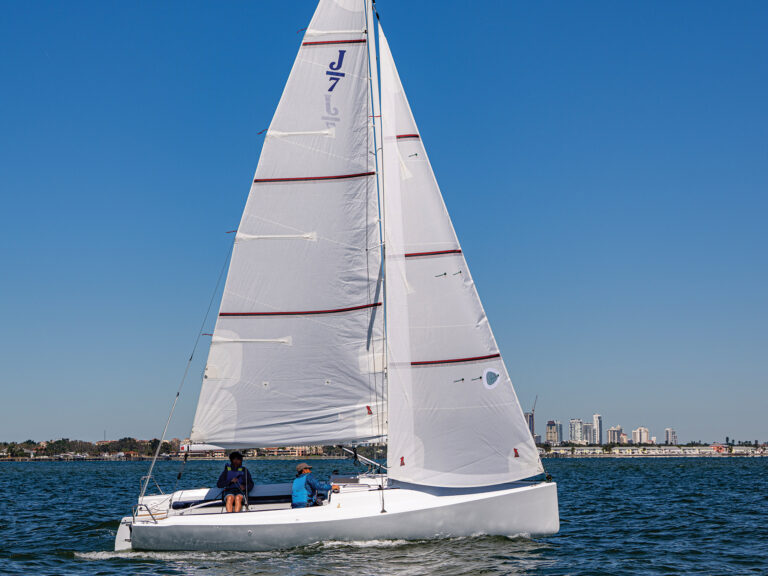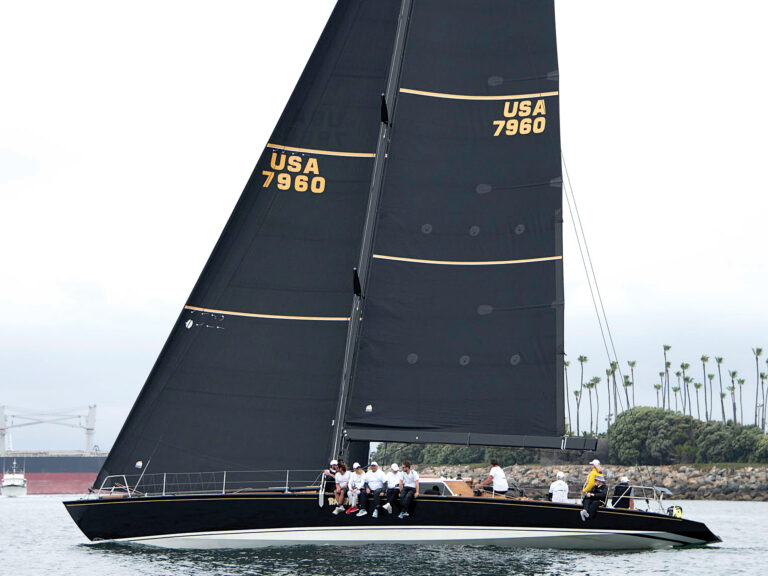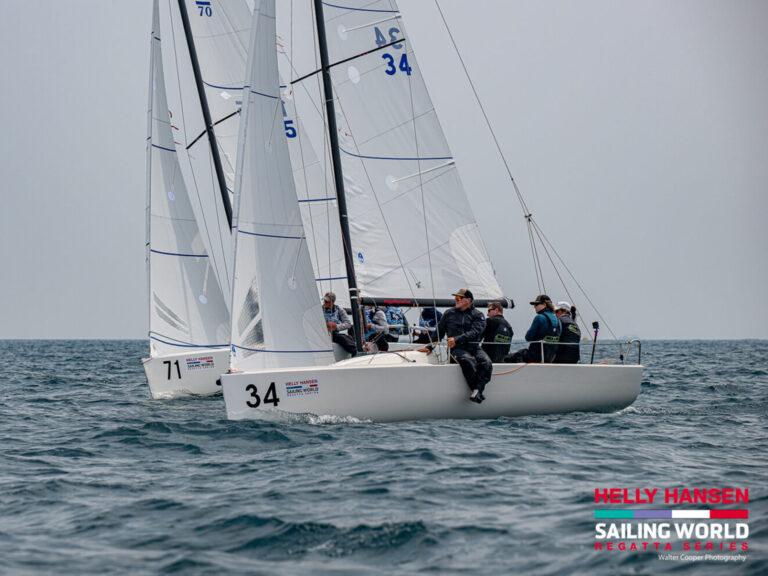Although six challenger syndicates have been operating in Auckland for the best part of six weeks or more, two of the most recent arrivals have been first off the mark in formally launching their New Zealand campaigns.
The British GBR Challenge had an open morning for the media and invited guests on Thursday, while the Swiss Alinghi syndicate had a function for selected media and guests that evening. The British function was marked by conditions that had the organizers congratulating themselves on choosing a non-sailing day for their events. The public address systems had to compete with the sound of wind shrieking through the rigging and rain hammering on the roof as a northerly storm swept the city — reminding the teams once again that a torrid time awaits them in the early rounds of the Louis Vuitton Cup this time next year.
By evening, the storm had passed and both syndicates had managed to convey the message that they were serious about competing for the Cup, although Alinghi, from its sprawling purple and silver compound and with its line-up of seasoned veterans, struck a more confident pose than the British. Peter Harrison, patron of the GBR Challenge, said the goal of the campaign was to take the Cup back to Britain where it all started in 1851.
“But the reality is that, like Formula One motor racing, its very difficult to win and, after 14 years away from the game, it is even more difficult to win.”
Harrison, who is a keen sailor, founded the GBR Challenge after selling his company, Chernikeeff, for 300 million pounds. In 24 years, Harrison built Chernikeeff from a small marine instruments company to the largest privately held computer networking and Internet integration company in the UK. Despite Harrisons stated objective of getting to the Cup Match this time, the underlying message of the British campaign is that this GBR Challenge will lay the groundwork for a bigger assault next time round.
After 14 years out of the Americas Cup arena, the British are back with a young and very talented line-up of sailors drawn largely from their successful Olympic sailing program. This team represents a deliberate effort to move British sailing away from what Harrison referred to as the “old guard” and to blood a new generation. The sailing team is led by double silver medalist (470 and Star) Ian Walker with three IACC yachts purchased as a “starter kit” from the Nippon Challenge. The team will build one new yacht at its home base in Cowes on the Isle of Wight.
The new boat is due to be completed about April next year and will be shipped directly to New Zealand so the team can work up the boat through the New Zealand winter in preparation for the Louis Vuitton series starting in October. A visit to the British base quickly reveals that it is a distinctly no-frills affair. The base area is small and, apart from a single boat shed and sail-loft, the workshops and offices are in converted containers. A separate administration area is in a suite of offices in a building 100 meters up the street.
The contrast with the Swiss base could hardly be greater. Occupying two former bases–the French and Japanese–Swiss pharmaceutical billionaire Ernesto Bertarelli has created a large, multi-story edifice with expansive entertainment areas.
Sited right next door to Team New Zealand, the Swiss team is led by former Team New Zealand skipper Russell Coutts, who told a TV interviewer he had received no negative reactions since returning to his homeland. He said it had been a great opportunity to start a new team with a clean sheet of paper, but his dealings with the Swiss had been entirely professional. “We do not trade information,” he said in a veiled reference to the secrets-for-sale case involving former Team New Zealand rules adviser Sean Reeves.
The new Swiss boat, with its distinctive upturned bow (though not as distinctive as the Spanish boat in 2000, which looked as if it had hit the dock too hard) has been out sailing and Coutts said first impressions were very favorable. It is notable that the Swiss boat, in its present incarnation at least, has a conventional rig, not the Millennium style rig that Coutts favored on the Team New Zealand boat.









